|
|
|
Back to locking reverse gear Forward to oil leakage A correctly maintained duck will be a good mate for a long time. If it's could and dark outside and if it starts raining, a cheap Artikle of your car, which schould have been removed according to the service intervall, will fail. If your 2CV stops running, the big guess starts: 'Valve clearence, ignition sparks or interruptor contacts?'. You also put up with more abrasion, if you don't care about the service intervalls. Not enought valve clearence means more thermal stress to to valves and old oil is not longer good enough to avoid abrasive of the pistons. Spend some time to do the necessary things around your car and write down the things you did. 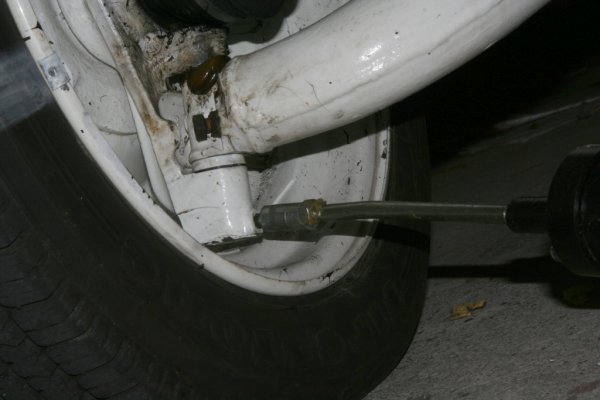 Lubricate the kingpin all 2.000km. This is a very small interval and therefore often rescheduled, sometimes completely omitted. This carelessness leads however to excessive abrasion and a kingpin is not so easily replaced. Take the grease gun at the lubrication fitting and press one or two times. Surplus grease (high pressure version) oozes out above and must be wiped off now. This work procedure is finished. 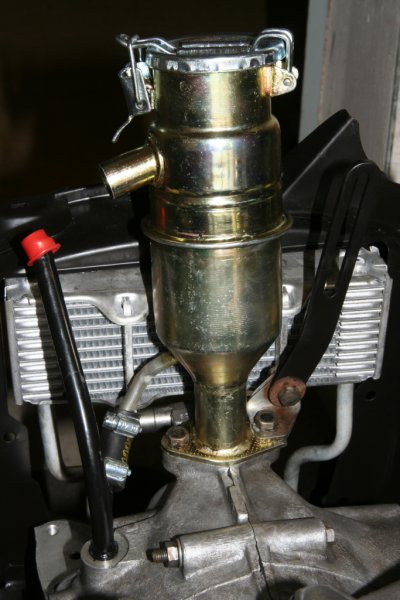 According to Citroën, after 5.000km the engine oil has to be replaced. On different pages on the web, 7.500km are indicated. This interval depends on the annual mileage and also on the driving. With small mileage as well as high revolutions (racing ducks) the changing intervals should be kept smaller. I have decided to keep a changing interval of 10.000km and then also replace the oil filter (according to Citroën after 15.000km). This oil filter is aproximately 0.5L larger than the original at my car. Classical 2CV oil is 20W50 and approx. 2,5L is needed. Now a small remark on the designation of today's multis-grade oil in the way xxW yy. The numerical values stand for the viscosity. Smaller values correspond more liquid, larger values to high-viscosity oils. The identification refers to the measurement at two temperatures, on the one hand with 0 degrees of Fahrenheit (- 18 degrees Celsius) and on the other hand with 210 degrees of Fahrenheit (99 degrees Celsius). 10W-40 is thus more liquid than oil of the designation 20W-50. Todays engines use oil with a lower viscosity (fuel-efficient engine oils) and so 20W50 is no longer available in all shops. The conceptual design of the 2CV engine is not brand new. At that time, lubricants were more viscous in general. Present lubricants are more teperature-resistant and the carbonization is lower. I am using the very popular 10W40 now and could not find any disadvantages afer 20.000km. Apart from the viscosity designation there are still identifications of the oil quality. Here I would like to call two standards. 1.) The API specification, given by the American petroleum institute. Oil for diesel engines is marked with the letter C and such for petrol (gasoline) engines with the letter S. The following letter stands for the oil quality. Letters farther in the alphabet stand for oils with high quality. API SL stands for an oil with higher quality for petrol engines than API SG. 2.) The ACEA specification of the 'Association des Constructeurs Européens d`Automobiles' of different car manufacturers. Here the letter A stands for petrol engines, B for diesel engines E for diesel engines in commercial motor vehicles (truck) and C for diesel engines with particle filters. Follows here a number of 1-5, which stands for the quality. A1 stands e.g. for a standard oil with normal changing intervals, A3 for a high speed oil with extended changing intervals.  The Ignition sparks and the interrupter contacts should be replaced after 15.000km. When using the electronic variant, the replacement of the contacts and the adjustment of the ignition timing can be omitted. When buying new ignition sparks, choose the right ones. EYQUEM C62 is recommended by Citroën. The wrong type can cause ignition problems or after firing. 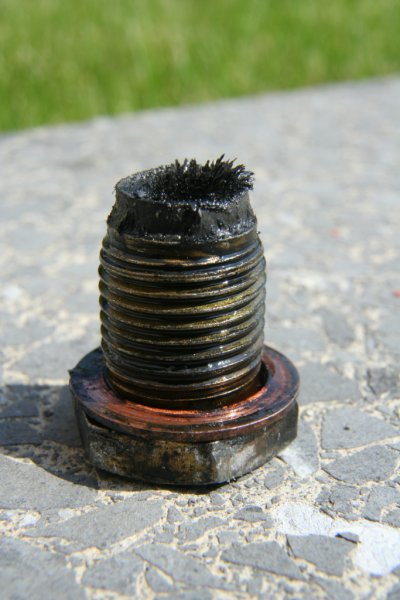 The transmission oil is to be replached after 20.000km. Here approx. 0,9L oil are needed. Use only oil of the consistency 80W90! According to the API specification transmission oils are marked with the letters GL (Gear Lubricant) and a number of 1-5. GL-1 stands for standard oil, GL-4 and GL5 for highly loaded transmissions, as we need it for our 2CV. At the photo the oil drain plug can be seen. This is magnetic and gathers the grains, which result from abrasion. Clean the screw also. 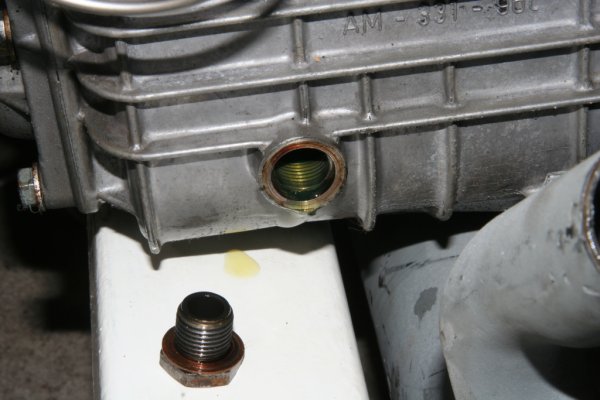 There is enough transmission oil filled in, if it reaches to the lower edge of the filling plug. The vehicle must be in horizontal position! 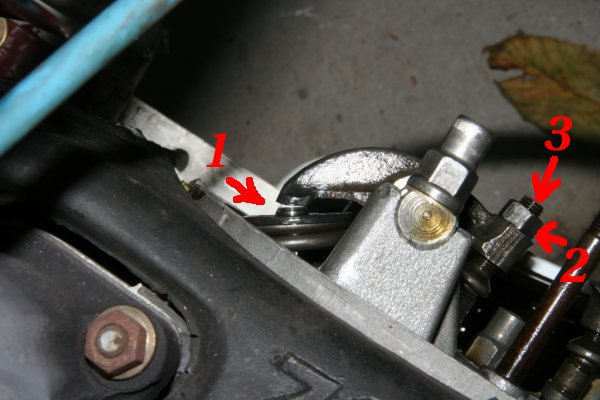 Likewise check the valve clearence after 20.000km. How to do this, can be read here. 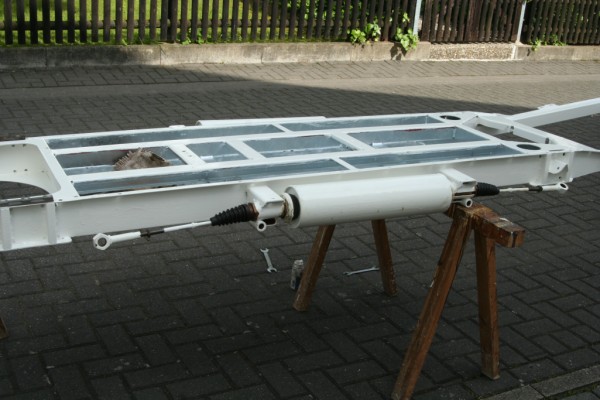 Each 30.000km the spring tubes should be greased with ricinus oil (available at the pharmacy, no longer in shops for car accessories). Mineral oils affect the rubbers of the suspension and may not be used therefor! Pull down the rubber grommet and instill some milliliters with the help of an approx. 30cm long rubber hose ( from e.g. a aquarium ).  What's absent? The engine-vibrations were responsible for the loosening of a special part of the carburetor for the second time at my car. You can find the answer to the question by clicking at the picture above. Prove the screw fittings from time to time. 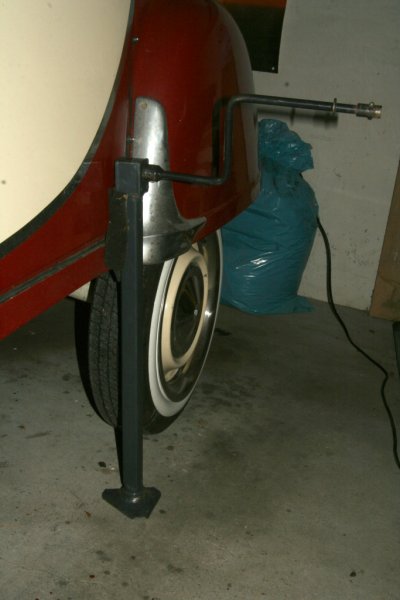 Occasionally you'll have to change a tyre. Park the vehicle on firm ground, tighten the emergency brake and insert a gear. Since with the 2CV the barrier by the engine and the emergency brake affect only the front wheels, it is recommendable to block at least one rear wheel with wedges or square woods. Now loosen the wheel nuts (do not unscrew copletely, only one revolution). Use the crank handle and the jacking equipment underneath the C-column for the rear wheels or underneath the A-column for the front wheels to lift the car. The jacking equipment should be as perpendicularly as possible! If the wheel is free from the soil, the wheel nuts can be completely removed and the wheel be replaced. Turn on the wheel nuts only sightly otherwise you may push the car from the jacking equipment. Attract therefore the nuts only with the full torque, if the jacking equipment is removed. After approximately 20km distance check all nuts again. 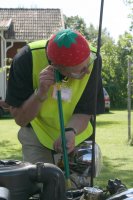
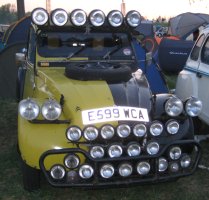 Listen to your duck and inspect the headlights (thanks to Julia for the foto), so that you can see in the dark and you can be seen. Walk around your car from time to time with open eyes, sense and sensibility. Controll the tread profile, the air pressure, have a look at the brake lining, the windscreen wipers, the fan belt, clean the oilcooler sometimes and pet your duck from time to time at the roof with acceptance (and repair the cracks you may detect threby). There is a lot to be done - do it at least sometimes! Back to locking reverse gear Forward to oil leakage. |